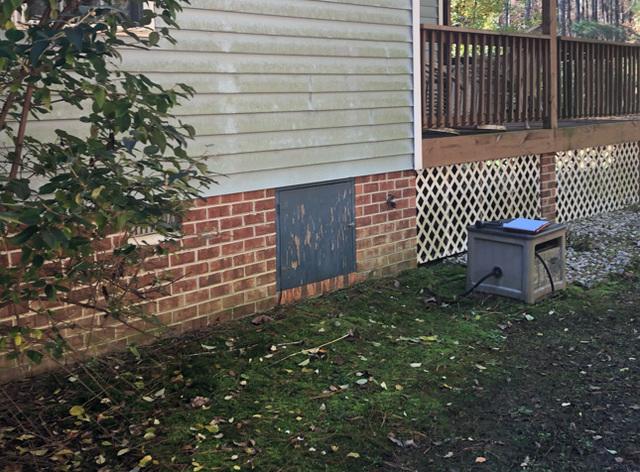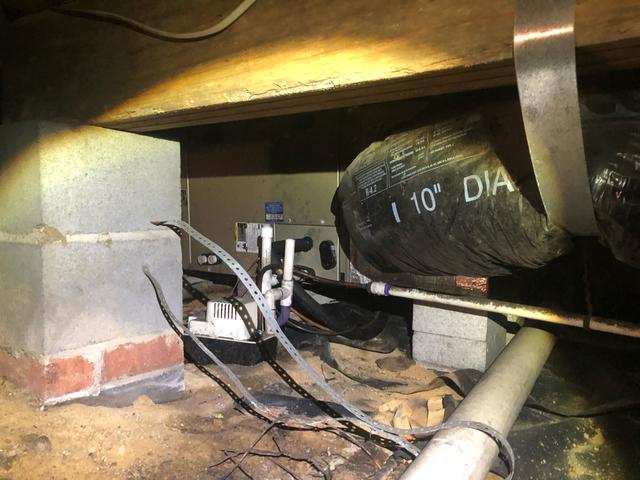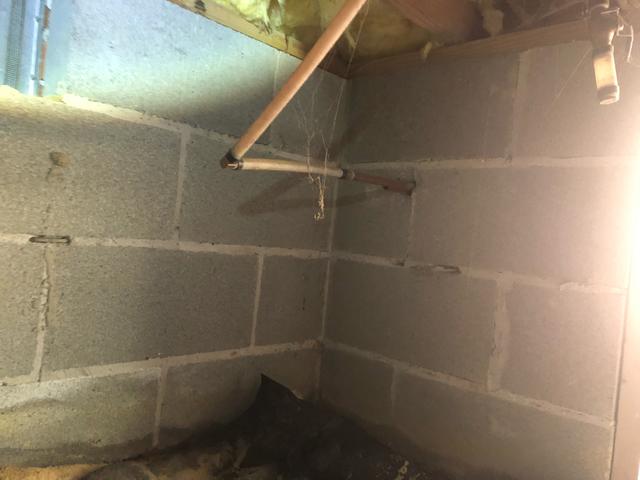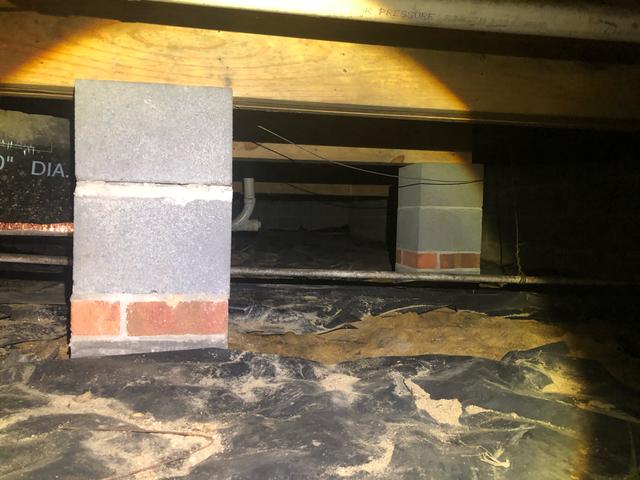
Crawl Space Door
Crawl space doors are a big contributor to moisture in the crawl space. They are damaged by the weather and seldom airtight allowing air carrying moisture to flood into the crawl space.

HVAC Equipment in the Crawl Space
Many homes have HVAC equipment and ductwork in the crawl space. Most ductwork is leaky, small holes throughout the system at joints and connections allow allergens such as dust, dirt, and mold spores in. These allergens make their way into the home and can irritate those with asthma and allergies. The lines also tend to condensate when cold air is pumping through them in the summer and the crawl space is hot and humid, the lines sweat increasing the relative humidity in the crawl space.

Foundation Wall Penetrations
An often-forgotten contributor of water and moisture problems in the crawl space is all of the holes punched through the foundation wall to the outside for utility lines. These holes are almost never sealed.

Vapor Barrier
The existing vapor barrier does not completely cover the ground, allowing moisture from the earth to rise into the space and contribute to the humidity and mold growth. It is also easily torn, damaged, and displaced at workers move throughout the space.

Mold & Mildew Growth
The excess moisture in the crawl space increases the relative humidity of the space, as this reaches 60% or higher, mold and mildew growth occurs. Mold needs an organic food source and loves the wood floor joists and paper backing of fiberglass insulation.

